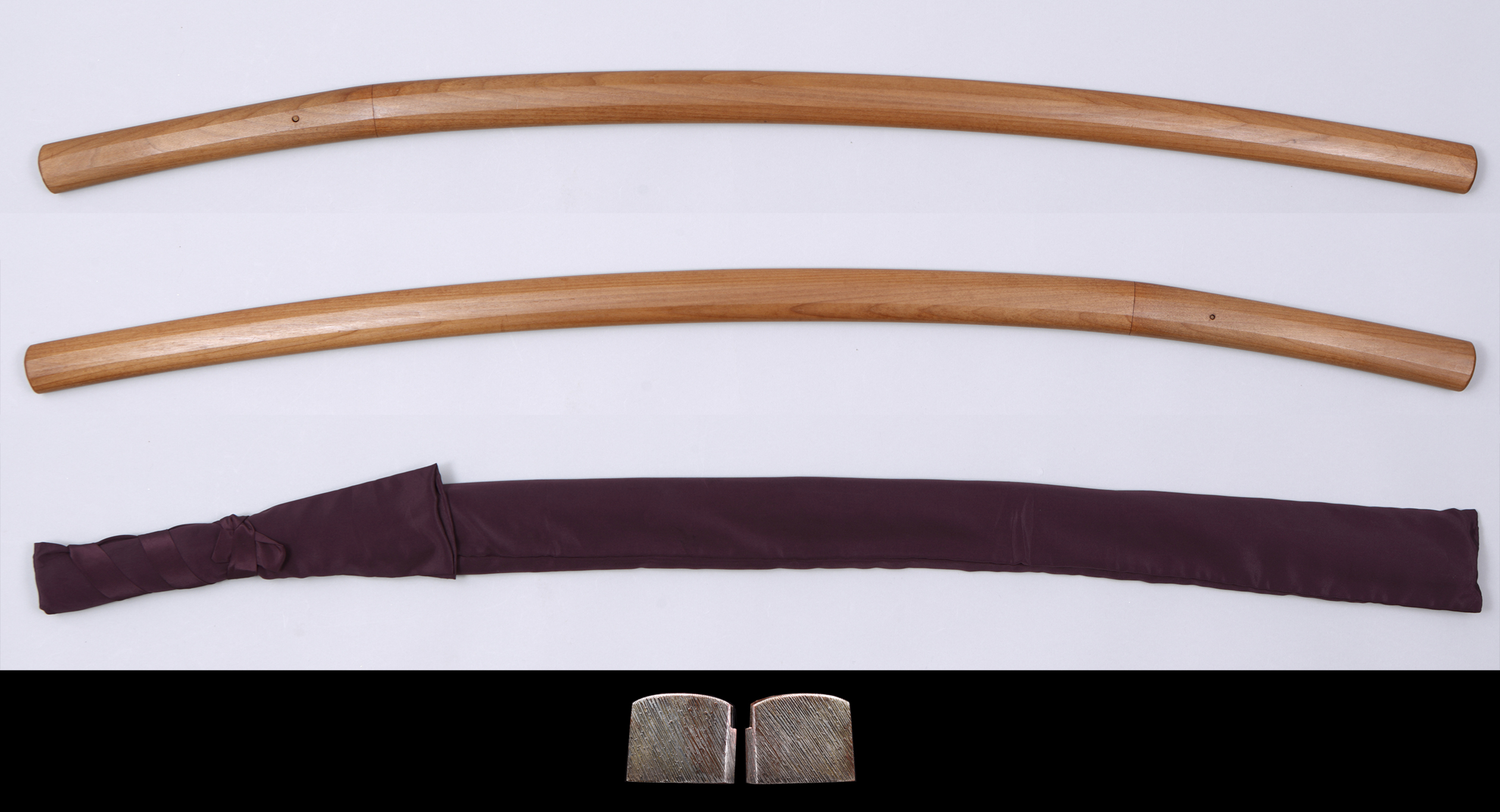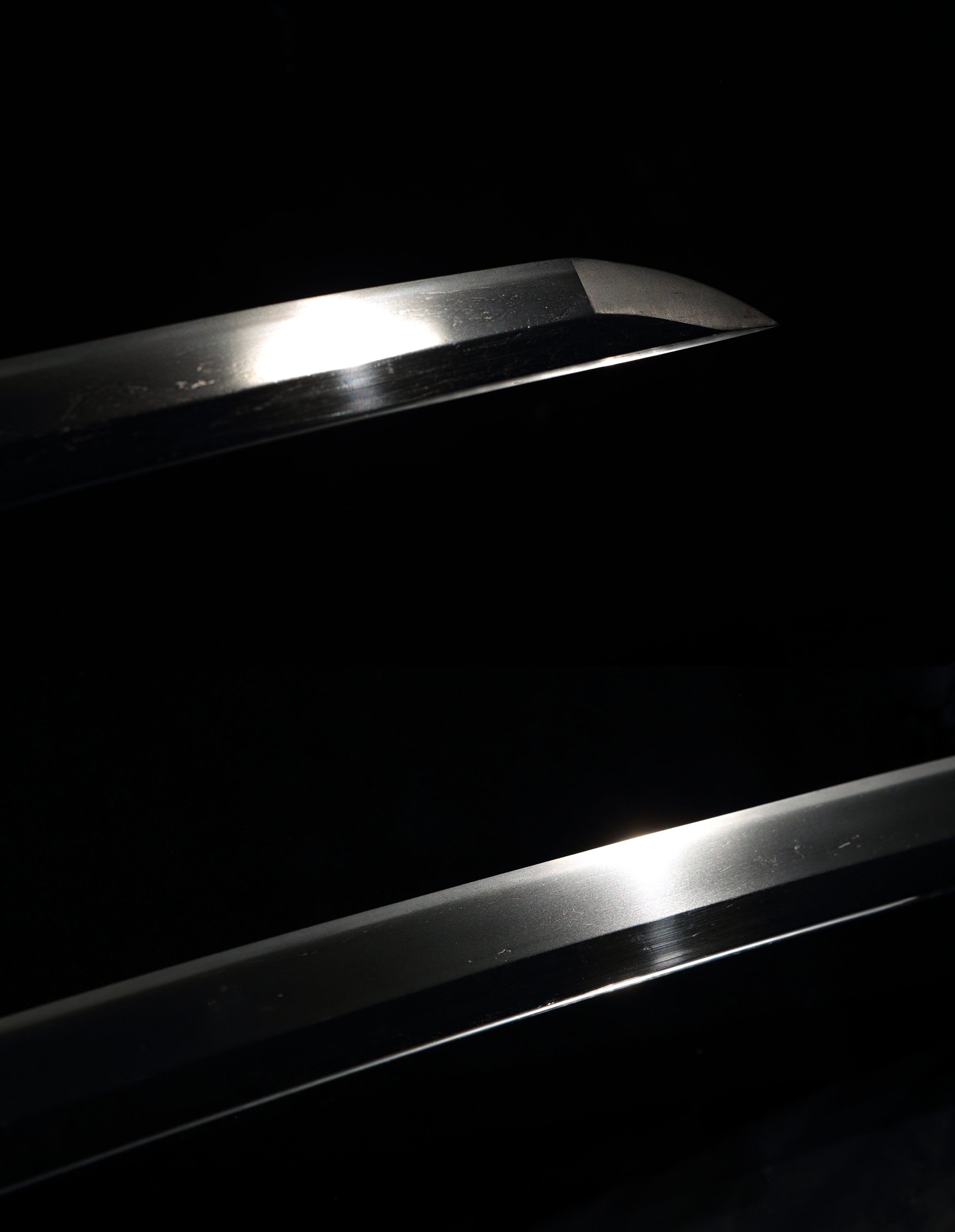

|
Tachi, Shirasaya |
Mumei, attributed to Ko-naminohira
|
[ Signature ] omote : no signature ura : -
|
[ Size ] Blade length 82.8cm (2 shaku 7 sun 3 bu 2 rin), sori 2.7cm (8 bu 9 rin), moto-haba 3.02cm, moto-kasane 0.64cm, saki-haba 0,28 cm, saki-kasane 0,28 cm, mekugi-ana(holes) 2, blade weight 655g , shirasaya length 99cm |
[ Period ] Kamakura |
[ Province ] Satsuma |
 |
[ Feature ]
Form : Shinogi-zukuri. Maru-mune. Both mihaba and kasane are ordinal. Reratively high shinogi-suji and high ko-shi-zori attached. There are some diffrences between moto-haba and saki haba, called funbari state. Chu-kissaki form.
Nakago : Ubu. Yasurimes are suji-kais. Saki is kuri-jiri. One hole. There remains a few red coloured signature.
Jigane : Itame-ahda well grained. Some chages mixed, becoming masa state accordingly. Rich jinie attached. Fine chikei appeared. Shirake-utsuri comes to be appeared.
Hamon : Hoso-suguha. Ko-midare mixed. Ko-nie attached. Fine sunagashis appeared.
Boushi : It runs in micare-komi. Form is ko-maru. Saki is haki-kake.
[ Highlight ] The ancient style of the sword is still in its original form. In the Yamato style, there are features such as the jigane which is well grained and shirake-utsuri comes to be reflected, and the fine straight blade with moisted distinction between jigane. So that this sword is attributed to Ko-Nami-no-hira. The founder of the Nami-no-hira school of swordsmithing was Masakuni, who came from Yamato to live in Namino-hira, Taniyama-gun, Satsuma in the late Heian period. After his son, Yukiyasu, the school continued to grow until the end of the Edo period.
[ Conditions ] There are some longitudinal splits in the forged skin on the front and back of the blade. However, when you hold it in your hand, it is not as obvious as it appears in the image. Some light rust and minor rust.
|
[ Attachments ] Single habaki, shirasaya, bag of shirasaya and NBTHK tokubetsu hozon paper "特別保存刀剣鑑定書" (issued on 25th June Reiwa 2(2021)) |
|
[ Item number ] A171121 [ Price ] SOLD |





